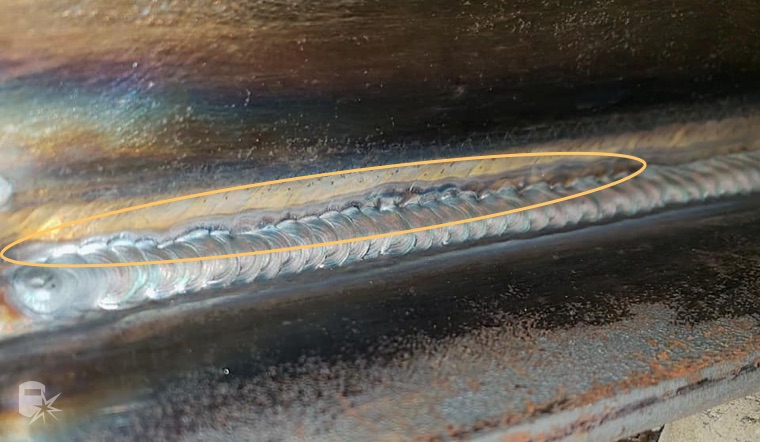Finest Practices for Preventing Weld Undercut: Grasping the Essentials
Finest Practices for Preventing Weld Undercut: Grasping the Essentials
Blog Article
Understanding the Causes and Solutions for Undercut Welding in Metal Fabrication Procedures
In the world of steel construction procedures, the event of undercut welding presents a substantial obstacle that requires an extensive understanding of its causes and viable options. The detailed interaction of various elements throughout welding operations can cause this undesirable phenomenon, influencing the structural stability and general high quality of the bonded joints - Preventing weld undercut. By exploring the source of undercut welding and checking out reliable therapeutic measures, fabricators can elevate the requirement of their handiwork and ensure the manufacturing of remarkable metal elements
Usual Sources Of Undercut Welding
Often forgotten in steel fabrication, undercut welding takes place due to different aspects that demand precise interest and proficiency to be effectively reduced. In addition, improper welding strategies, such as using the incorrect welding angle or take a trip rate, can likewise add to undercut development. The option of welding specifications, such as voltage, current, and cable feed speed, plays a considerable role in the event of undercut welding.
Impact of Incorrect Welding Parameters
Incorrect welding specifications can considerably compromise the stability and high quality of welded joints in metal construction processes. The effect of inaccurate welding parameters shows up in different ways, leading to structural weak points and defects in the welded elements. Meticulous attention to welding parameters is critical to guarantee the production of top notch welds with the preferred mechanical properties and architectural stability.
Impact of Improper Lantern Angle
Inappropriate lantern angle in welding procedures can substantially influence the quality and stability of the last weld joints in steel construction processes. The torch angle plays an essential function in identifying the warmth input and circulation during welding. When the lantern angle is incorrect, concerns such as damaging can emerge. Undercutting is a common welding flaw where a groove forms along the weld toe, compromising the joint and endangering its structural integrity.
A lantern angle that is as well steep can lead to inadequate penetration, incomplete blend, and enhanced spatter. On the various other hand, a lantern angle that is also shallow can result in too much infiltration, burn-through, and distortion of the base product. Preventing weld undercut. Correct torch angle is crucial for making sure regular weld quality, toughness, and look
To protect against undercutting and other problems brought on by improper lantern angles, welders must be educated to maintain the right lantern angle throughout the welding process. Regular surveillance and change of lantern angles during welding can aid attain sound welds with minimal defects.
Role of Inadequate Welding Strategies

An additional element of inadequate welding methods is inappropriate weld preparation. Poor cleaning of the base steels, incorrect joint layout, or inadequate edge prep work can all add to damage welding. In addition, poor protecting gas protection or making use of the wrong sort of gas can result in insufficient combination and the formation of undercut defects.
To resolve the role of insufficient welding techniques in steel manufacture processes, it is necessary to provide detailed training for welders. Appropriate education on welding specifications, joint prep work, and shielding gas selection can aid avoid undercut welding and guarantee top quality welds in metal manufacture tasks.
Effective Solutions for Undercut Welding
Resolving undercut welding in steel construction calls for applying efficient solutions to improve weld quality and structural integrity. One of the primary options to fight undercut is to adjust welding criteria such as home voltage, current, and take a trip speed to ensure proper heat input and fusion. By fine-tuning these settings, welders can avoid too much melting of the base metal and filler material, decreasing the possibility of undercut development.
Additionally, appropriate joint prep work is important in stopping undercut. Making sure clean base metal surfaces free of pollutants and using the suitable bevel angle can assist advertise far better weld infiltration and lower the risk of undercut - Preventing weld undercut. Employing suitable welding strategies, such as weaving or oscillating the torch, can likewise aid in distributing heat evenly and loading the weld joint sufficiently, lessening the opportunity of undercut defects
Furthermore, picking the right welding consumables, including electrodes and filler steels, is crucial in minimizing undercut. Making use of products with ideal chemical structures and mechanical properties can add to achieving audio welds with very little undercut. Routine assessment and quality control steps ought to also be executed to identify and attend to undercut concerns promptly, guaranteeing the total honesty of produced metal components.

Conclusion
Finally, recognizing the reasons and remedies for undercut welding in steel construction procedures is essential for achieving high-quality welds. By attending to typical causes such as wrong welding parameters, inappropriate torch angle, and insufficient welding strategies, welders can protect against undercutting and guarantee solid, durable welds. It is necessary to pay interest to these variables and execute efficient solutions to boost the general welding process and last product top quality.

Report this page